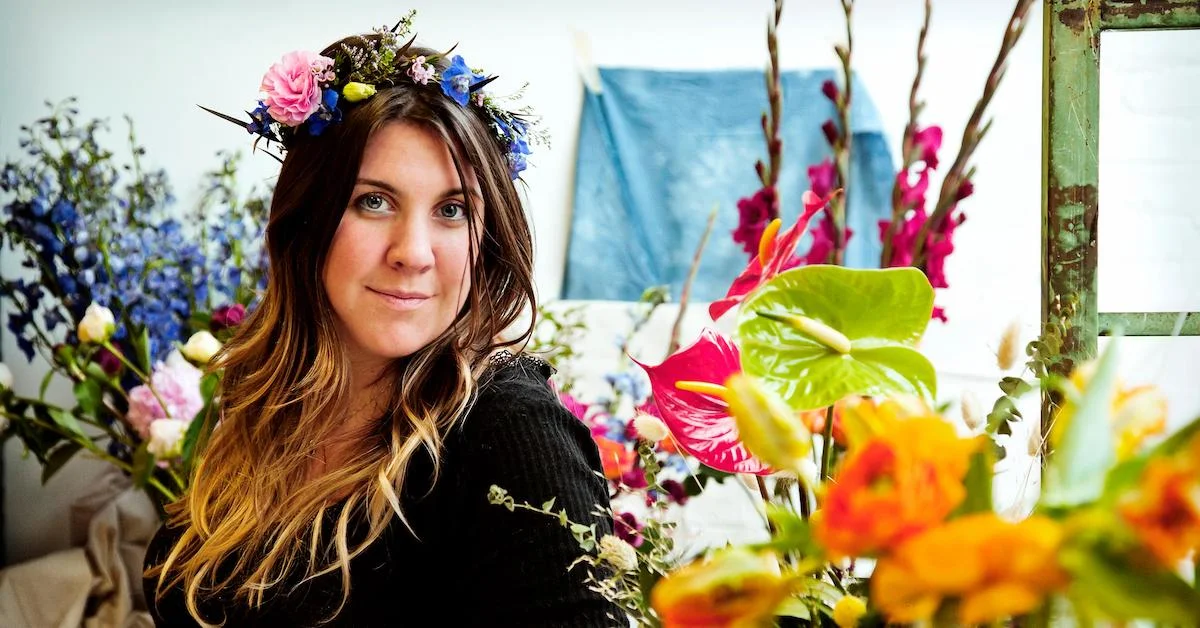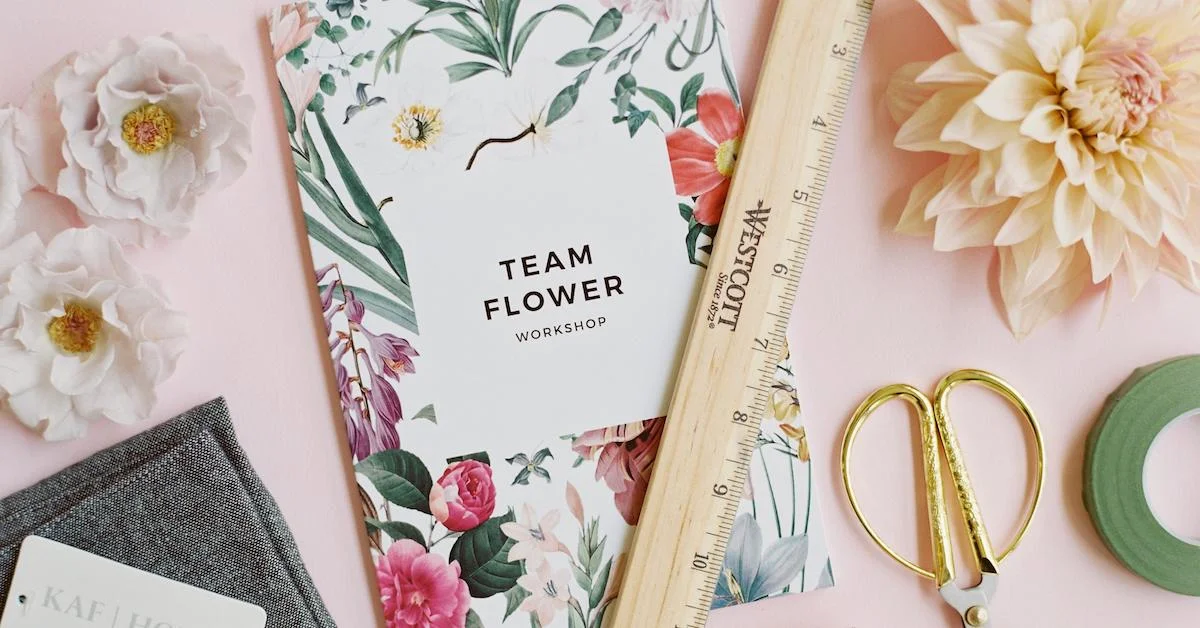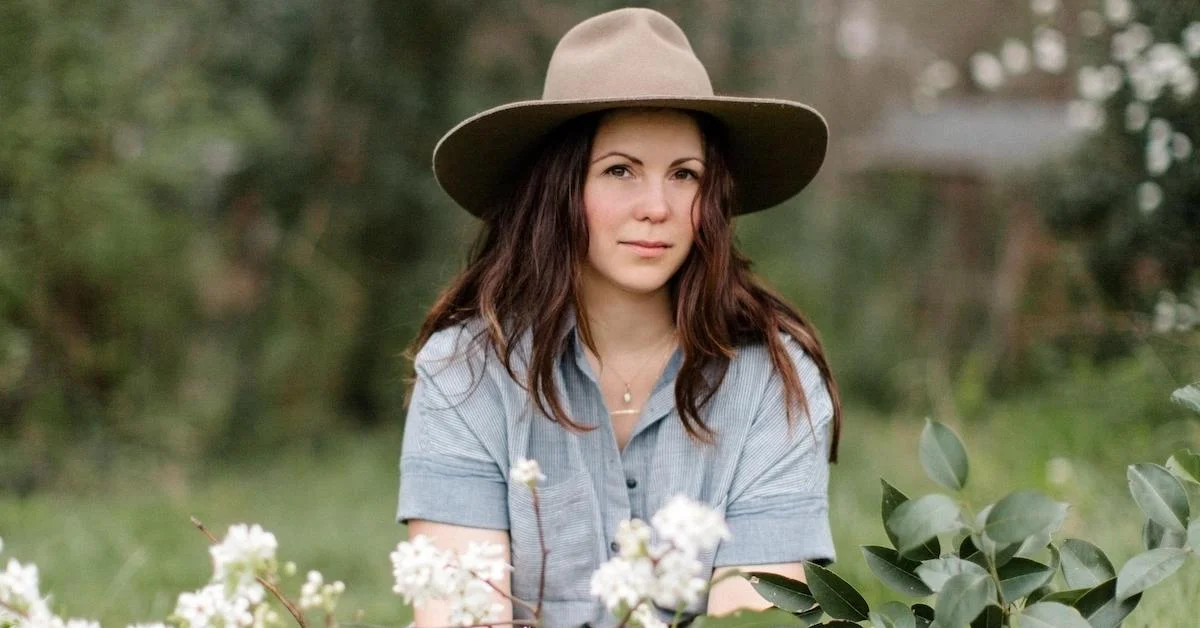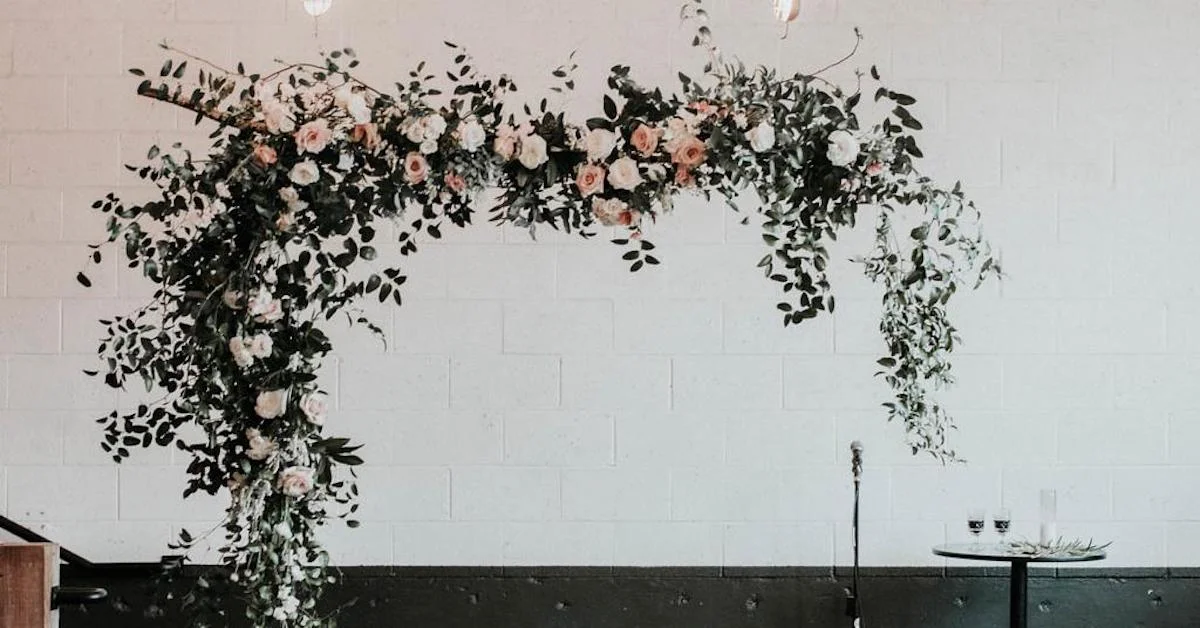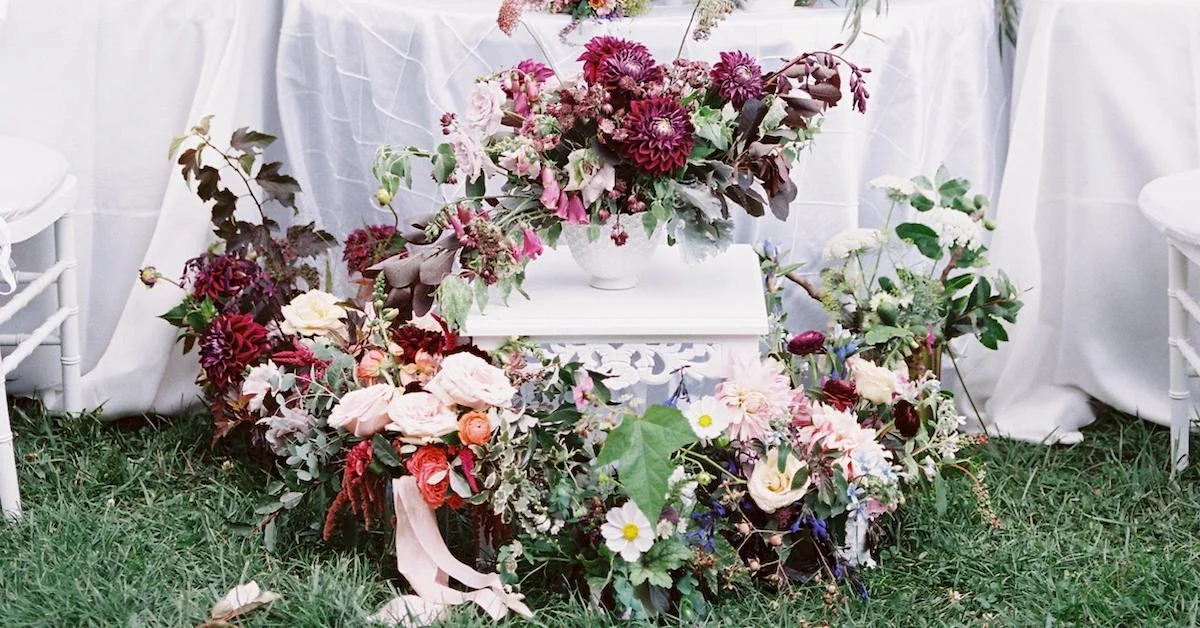Suzanna has great insight and wisdom regarding transition, and in this episode we’re talking about what it’s like to shift brands multiple times—as well as when it’s necessary to diversify your revenue stream. We’re chatting about hiring that first person and what it looks like to expand a team. Suzanna is sharing how she interacts with her team and navigates conflict with her staff.
Is This Pop-Up Smart for Your Floral Business? Here's How to Know
Pop-ups, workshops, and handmade markets are all on-trend, but I hear more and more participants complaining they’re a bust and a waste of time and money when, in fact, these types of events can be a great money maker for your floral business and a vehicle to let people in your community know about your floral services.
8 Outstanding Tips for Excelling in Retail Floral Work
In my view, the flower business is 25% design, 50% sales and marketing, and 25% financial and human resource management. Even if you don’t own your business, understanding basic business principles will make you extremely valuable to your employer. Don’t underestimate the power of the business of flowers!
Video: When and Where to Use Wired Flowers in Floral Design
Wiring is a valuable and specialized skill that can add value to your business and set you apart as a designer and freelancer. Kelly explains why wiring is important—as well as when and where to use wired flowers—in this excerpt from the Team Flower Advanced Techniques for Wiring fast track class. The wiring technique gives you a lot of control over the exact placement and orientation of each and every bloom in a piece—if you need your focal flower to bend in a certain way that is not natural for its stem, wiring makes that possible!
Incorporating Systems into Your Floral Business with Cristina of Fleur Society
Kelly is joined by Cristina Barragan of Fleur Society on this episode of the Team Flower Podcast. Cristina is passionate about utilizing systems in business, and she is talking with us about how smart business practices can save time and increase productivity.
4 Best Practices for Keeping Personal Flowers Fresh
Personal flowers are the most important of the wedding day—and sometimes the ones that get the least amount of care! Bouquets, boutonnieres, corsages, posies, and flower crowns… these are the flowers used most in photos (and the flowers that are least likely to be in water throughout the day), so it’s essential to implement best practices ahead of time to make sure they are as fresh as possible.
Top Reasons Why I Decided to Get My AIFD Floral Accreditation
While completing my basic floral training and starting my career as a shop assistant, while there are many avenues for training and certification, I set for myself the goal of becoming a wedding designer and ultimately earning my AIFD accreditation.
Living Floral with Margot of Flower Magazine
Margot Shaw, the founder of Flower Magazine and author of Living Floral joins us on this episode of the Team Flower Podcast. Margot tells the story of Flower Magazine and how it came into existence from her dream of a botanical lifestyle. We talk about what it means to live with flowers—not just work with them. We are also chatting about Margot’s wonderful new book, Living Floral. The pages are full of beautiful photos and inspiring stories of using flowers to bring color and life into your home.
How to Plant a Peony Cutting Garden
Is there anything more thrilling than preparing a garden plot that will pay floral dividends for years to come? Many gardeners plant peonies for pure enjoyment, but peonies also play an important role commercially as a high-dollar flower for floral design work. As a farmer-florist, you can grow the cultivars that compliment your design style, including some that are otherwise hard to find or not available on the commercial market. You also have total control over the harvest, selecting only the most perfect buds for your design work.
Quick Guide to Growing Hellebores
Blooming from December into early spring, they are a much-anticipated bloom, the first of the year here in Oregon. Hellebores like a shady position in the garden with well-drained soil. They love a well-prepared site, cultivated deeply for their long and fleshy roots, about two to three feet deep and amended with rotten manure.
Video: Using Complementary Colors in a Minimalistic Floral Arrangement
In this excerpt from the Team Flower Elements and Principles of Design class, Kelly demonstrates the principle of movement by creating a minimalistic floral arrangement using complimentary colors. Complimentary colors are opposites on the color wheel (orange and blue, purple and yellow, and red and green). She uses caladium, firecracker, and green trick dianthus to demonstrate the most difficult of the three groups: red and green. This is a color palette that typically reminds us of Christmas, but it can be used to create a sweet summer piece as well.
Overcoming Overwhelm with Designer of the Year Megan Willis
In this episode of the Team Flower podcast, we’re talking with Megan Willis of Bloom Dallas. Megan is the 2019 Team Flower Designer of the Year, and she is sharing some tips on displaying your passion and personality through your brand as you work to appeal to your market. We are chatting about burnout in the floral industry and how to overcome overwhelm in your business. Whether you’re struggling with reaching your ideal client or ready to toss in the towel on your creative venture, you’ll be encouraged by our conversation.
How to Become a Large-Scale Flower Business
Growing a business from 10 events a year to 200+ events that you manage and produce with a team begins with a major mind-set shift. Once you start thinking about your business in a certain way, you will begin to make decisions which line up with that vision of your business. If this is your goal, here’s how I made that shift myself.
Video: Core Sustainable Pricing Philosophies
Pricing is often a sore spot within the floral industry, and it’s one topic I’m very passionate about. Floral professionals are easily overwhelmed with how much to charge for their services, but with the right mind-set, this obstacle can be overcome.
Best Foraging Practices with Rebekah Clark
As you might imagine, we are diving into all things foraging! Rebekah and Kelly are discussing their favorite go-to foraging materials that can be found both in the wild and in the garden. We are chatting about the seasons of plants and how they can be used in their various stages of development.
Floating Floral Arbor Installation: A How-To
When we first decided we wanted to incorporate one of these into our weddings we were VERY intimidated. There were so many questions! What would we use? How would we get it to stay level if it’s asymmetrical? How would it be strong enough to not cave in the middle?
Floral Workshops vs. Conferences: Which One Is Right for You?
Have you found yourself considering an in-person floral education experience? If so, that’s great! We believe that continual learning and growing is key to a joyful, empowered life with flowers and personal connections and relationships are where the true magic happens. Behind your excited anticipation for the journey you’re about to embark on, there may be some confusion or uncertainty. There are a lot of different floral education experiences available to you—from one-on-ones and conferences to workshops and internships. You may be wondering what is the best fit for you.
Floral Headpieces with Electric Daisy Flower Farm
This episode is full of heart and electricity (pun intended), and there’s no doubt you’ll find yourself grinning as Fiona shares some behind-the-scenes stories. Fiona’s passion for living in a way that respects the seasons of the earth cannot be mistaken, and the joy she’s found in collaborating with other artists to make dreams come to life is both beautiful and contagious.
Best Practices for Flower Farming in New England
Flower farming in New England is not for the faint of heart. Blazing heat and humidity in the summer, frigid cold temperatures in the winter, wind, rain, snow—then throw in the occasional hail storm, hurricane or Nor’easter, and you know you need a resilient and determined personality (read: stubborn) to grow flowers professionally in New England. With a relatively short season in which to grow, season extension and succession planting are the keys to success, but learning to accept your zone and work within its natural cycles is also important. In this article, I will attempt to summarize some of the best practices for growing flowers in New England.
Video: How to Use Succulents in Floral Arrangements
In this quick tip video about using succulents in an arrangement, Kelly will show you a tip how to elongate the stem! Learn how to become a florist and take floral design classes online with Team Flower. Here you can even learn tips on flower gardening for beginners. We'll show you how to do flower arrangements in flower arranging videos.
Transcript
I wanted to show you how to wire succulents. And by wire, I mean I'm gonna stick a big bamboo skewer through it.
I like to pull off these little lower petals.
And then I just take my bamboo skewer and I line it up right there on the side. And then I look for the stem tape that is the closest color to the succulent that I'm using. And I just wrap it around like this.
Very, very simple.
For succulents that are really big, I like to poke a little whole in the top of it and then put in some-- just a tiny little dab of Oasis wet glue. Let it get sticky for about 10 seconds, and then I put my skewer in that and tape down the stem just like I did with this one. So this is ready to pop into a bouquet, or you can clip it off just like you would a flower stem and pop it into your arrangement. I'm gonna do it one more time.
Clip as long as you can from the base of the plant. Take off the lower level petals.
And I'll just reuse this skewer that I already wrapped. Gotta get [INAUDIBLE] of it.
And just tightly, firmly wrap it to your skewer.
That's it. Very easy.
And just because a succulent isn't completely perfect, doesn't mean you can't use it. If part of these petals, if it was kind of one-sided and some of these petals over here didn't grow quite right, you could just tug that part in towards the back and then put those pieces that still looked really pretty out as, like, a silhouette around the bottom of your container or something. So you can always use the flowers. And use every little last bit that you can.
Just be strategic.
So there you have it. Little succulent addition. Hope you enjoyed it, and hope that encourages you to go try it for yourself. Have a good one.

